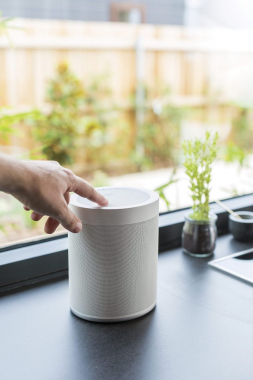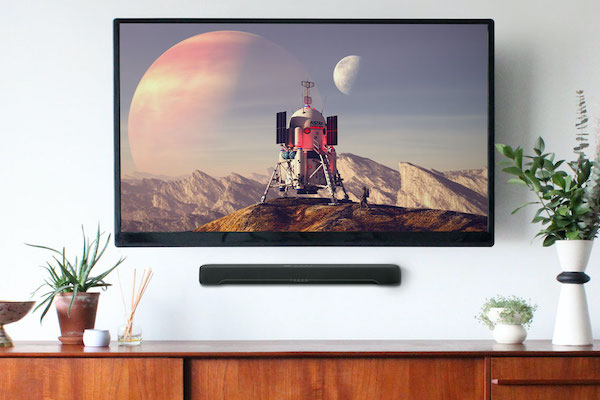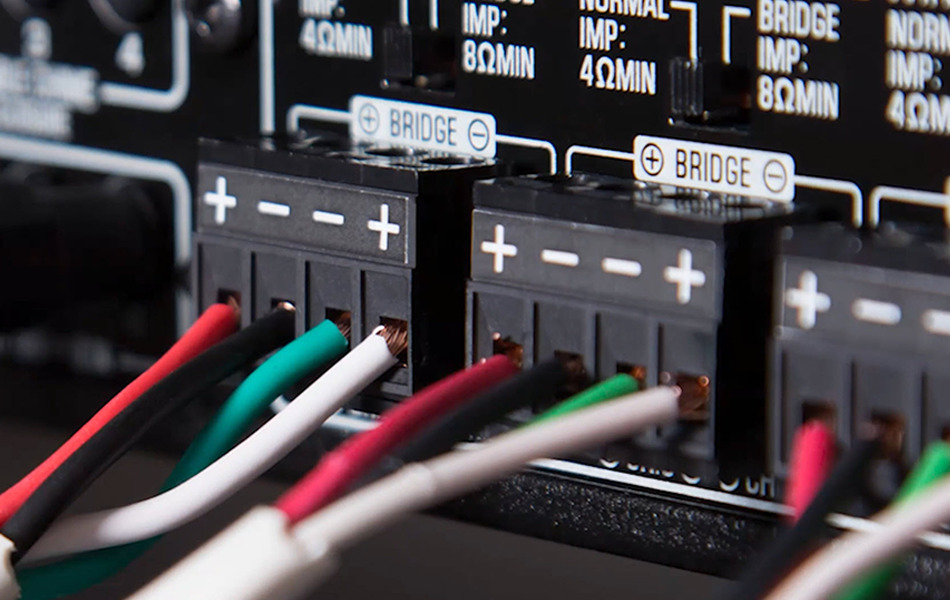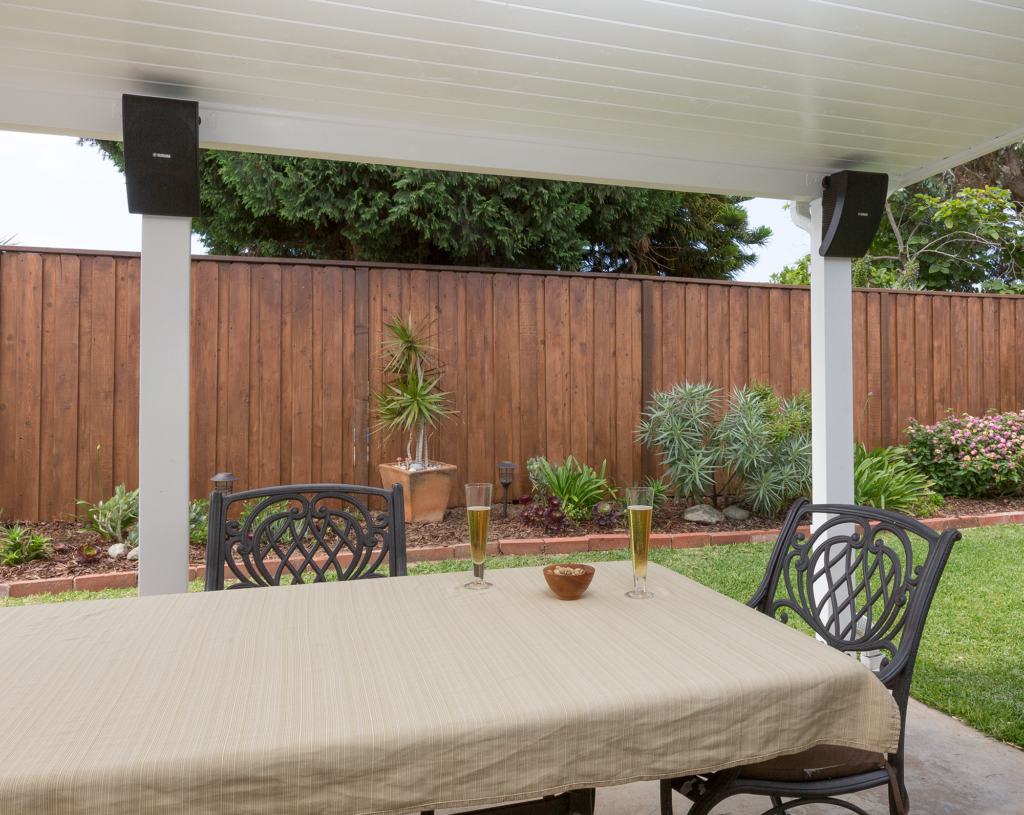How to Get Great Audio In Your Home Office
Incorporate some technology and you’ll be able to turn business into pleasure.
There’s no question that the corporate landscape has shifted dramatically in recent months, relocating millions of people from cubicles at their place of business to kitchen tables at home. It’s a watershed moment for us all, and especially for providers of technology, as this new WFH (work from home) demographic seeks solutions to optimize their performance and productivity in makeshift office spaces.
Even those fortunate enough to have a private, dedicated area from which to work can benefit from the inclusion of audio technology. In this article, we’ll tell you how to get great audio in your home office, however modest or expansive it might be.
Audio Keeps You Connected
It’s easy to feel isolated and disconnected from clients and colleagues when working from home. Thankfully, good Wi-Fi® connectivity and video conferencing software are helping remote workers maintain close contact virtually. It may not have the same impact as in-person meetings, but you still get the wealth of information that facial expressions, hand gestures, and body posture can impart.
All these visual cues mean nothing, however, if you have to strain to hear the conversation — or, just as bad, if the people at the other end of the line can’t hear you. Intelligible audio is critical to conducting business and conveying a professional work-from-home image, yet it can be tough to pull off in a household setting. There are countless distractions — kids, barking dogs, the doorbell, the neighbor’s lawnmower — that can pull you mentally away from the conversation, and the microphone in your computer can pick up a lot of background noise, making it tough on everyone. The problem is exacerbated if you have to conduct conference calls from the kitchen, living room or other shared space, so even if you make your best efforts to stay focused, your ears can struggle to hear what’s coming from the computer speakers.
Minimize Distraction with Headphones and Earbuds
Fortunately, there’s an easy and affordable solution: Turn off your computer’s speakers and put on a pair of headphones or earbuds instead. Headphones and earbuds serve the critical function of muffling extraneous noise so you can focus on listening to what is being said during a virtual meeting. They also give your family members an important visual cue — a clear indication that you are in work mode and should not be disturbed. And if you’re the type of person who likes to work with background music — a proven productivity booster — they can bring music to your ears without disrupting others.
Over-the-ear noise cancelling headphones provide excellent isolation, removing virtually all extraneous noise. What’s more, wireless models like the Yamaha YH-E700A allow you to stay connected and engaged even when you leave your desk for a cup of coffee. The YH-E700A provides a number of useful work-from-home technologies, such as Listening Optimizer, which adapts the incoming sound to your environment, and an Ambient Sound mode for those times when you need to hear what’s happening around you (such as, for example, a child in need) in addition to the audio coming from your computer.

If you find headphones too constraining and isolating, consider using earbuds like the Yamaha TW-E3C instead. Like the YH-E700A, these are wireless, giving you the freedom to move around the room, and, like the YH-E700A, they offer a special feature called Listening Care, which provides automatic equalization for full-range sound and intelligibility even at low listening volumes. And although TW-E3C earbuds are smaller than headphones, they still pack a powerful punch, and they’re comfortable and safe enough to wear all day.

As a bonus, both the TW-E3C and the YH-E700A can be used to make phone calls and send verbal commands. By engaging a tap-to-talk button, you can tell your voice assistant to turn on the music, dim the lights, even answer the doorbell, as long as those devices are compatible with voice control platforms.
Mix Business with Pleasure by Using Sound Bars and Wireless Speakers
If you’d rather get your home office audio from standard speakers, there are countless options. Yamaha offers a wide range of wireless models that can be easily integrated into a home office setting — as well as in other rooms of the house — allowing you to effortlessly mix business with pleasure. From business-related podcasts and stock reports to after-hours rock and roll, dedicated music speakers provide audio quality far superior to that of ordinary computer speakers. Choose wireless models like the Yamaha MusicCast 20 (small enough to fit on any desktop) or MusicCast 50 (for larger rooms) and you won’t even have to run any cabling, allowing you to hear what you need to hear in any room of your house — even out on your patio.
In fact, with the right speakers and computer display, a dedicated home office can function as a home theater when you clock out. If you like the size and resolution of your computer monitor, the transformation is as simple as connecting a Yamaha SR-C20A sound bar to your setup. You’ll get the full surround sound effect, as well as deep bass from its built-in subwoofer. The SR-C20A is the perfect compact size too. It measures a mere 23 inches wide, so you’ll hardly sacrifice any amount of surface on your desk surface; alternatively, it can easily be wall-mounted.

If you want to take your after-hours entertainment a step further, consider investing in a large flat-panel display and add an integrated sound bar like the Yamaha SR-B20A, which has a built-in subwoofer for that powerful low-end punch. If you need a better way to watch the news and other business-related content, or require a bigger view of online presentations while you work (with commensurately bigger sound), this is just the ticket … plus, when you’re not working, you can use your home office to entertain friends and family.

Listening to the Audio Needs of Your Home Office
Solid communication and collaboration are essential in any work environment. So when the home office becomes your only office, the technology that drives the audio — be it conversations from a videoconferencing session, an online business course, a recorded presentation or productivity-boosting background music — needs to stand up to the unique challenges of a work-from-home setting. A pair of high-quality headphones, wireless speakers and/or a sound bar can help turn every kind of space — from an ordinary guest bedroom to a corner in the kitchen or anywhere else you plop your laptop — into a functional, productive home office.
Click here for more information about Yamaha YH-E700A wireless headphones.
Click here for more information about Yamaha TW-E3C wireless earbuds.
Click here for more information about Yamaha MusicCast 20 wireless speakers.
Click here for more information about Yamaha MusicCast 50 wireless speakers.
Click here for more information about the Yamaha SR-C20A sound bar.
Click here for more information about the Yamaha SR-B20A sound bar.

















